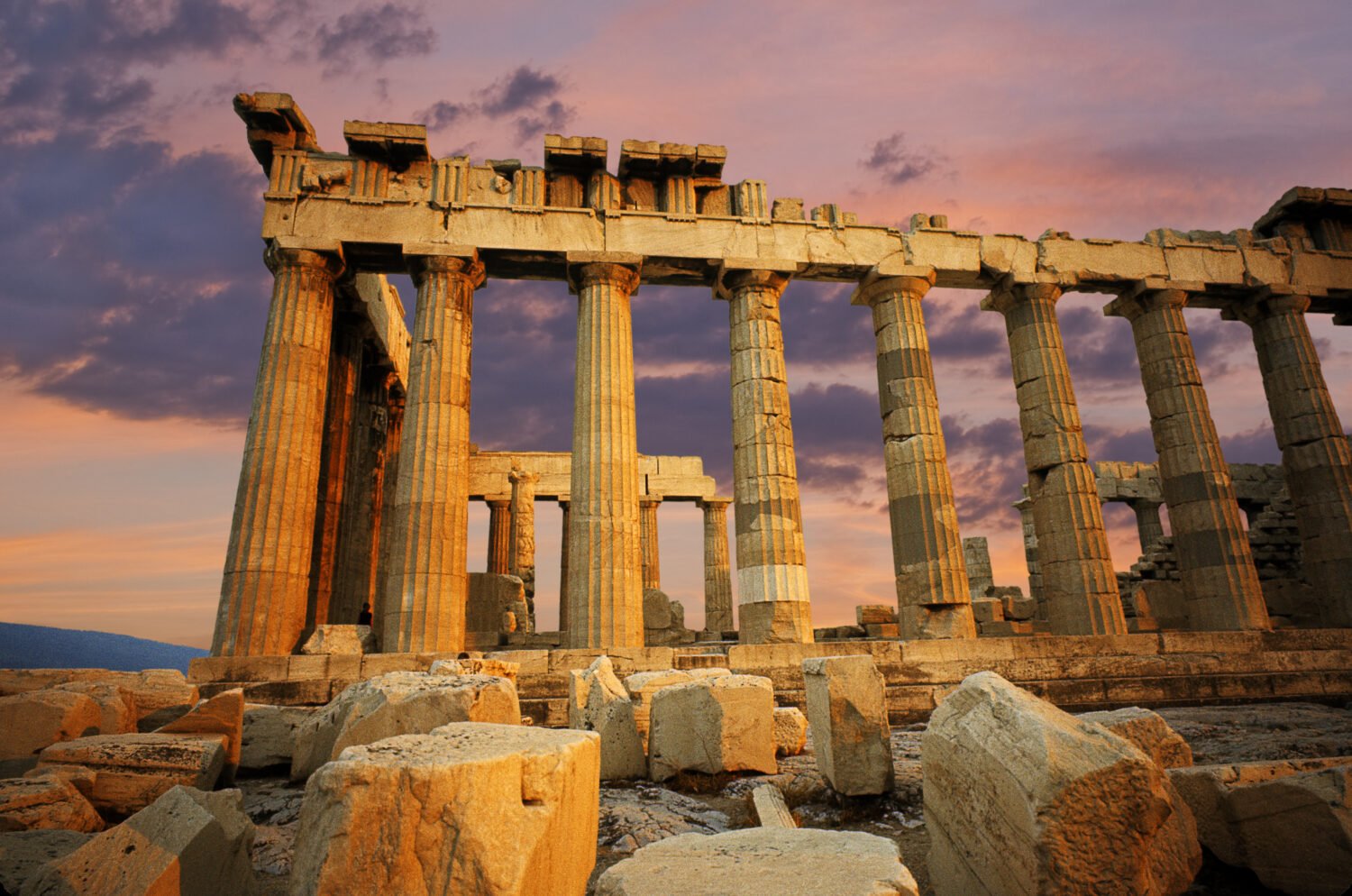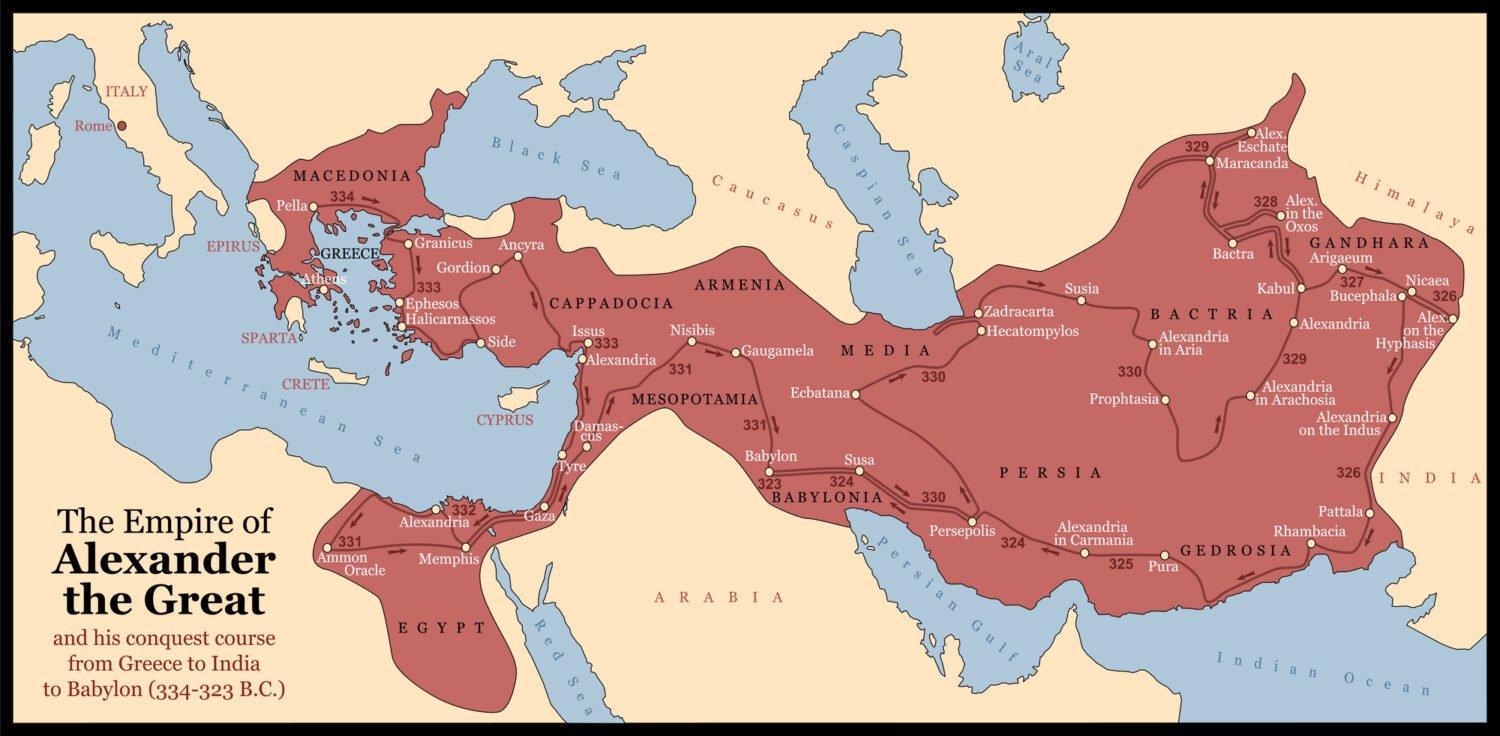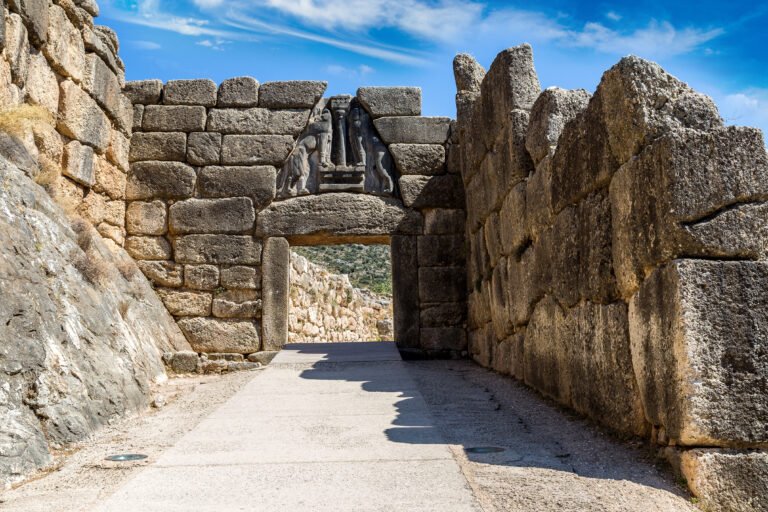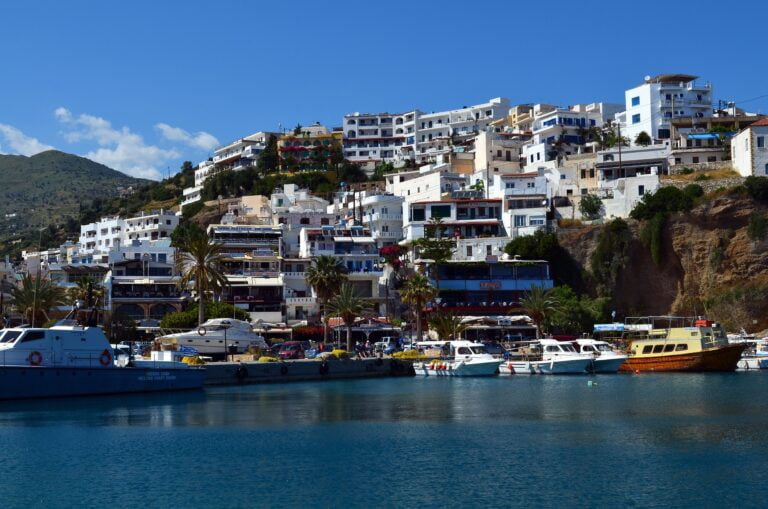Crete in the Classical Period (c. 500-323 BCE) A Fascinating In-depth Exploration
The Classical Period, from c. 500-323 BCE, stands as a beacon in the annals of ancient Greek history. While the luminous tales of Athens and Sparta often overshadow other narratives, the island of Crete demands a closer look with its intricate blend of culture, politics, and innovation. This article delves into the multifarious facets of Crete during this period, offering a panoramic view of its role in the broader Greek milieu.
Crete: A Tapestry of Land and Sea
Crete, the largest of the Greek islands, is a geographical marvel. Its undulating landscapes, ranging from rugged mountains to fertile valleys and sun-kissed beaches, have shaped its history. The island’s topography influenced everything from agriculture and trade to defence strategies, making it a unique player in the Aegean world.
The Minoan Echo
The Minoan civilisation, Europe’s first advanced society, had its roots in Crete. The Minoans had faded into legend by the Classical Period, but their influence lingered. The architectural marvels, like the palace at Knossos with its intricate frescoes and advanced plumbing systems, served as a constant reminder of Crete’s glorious past. This Minoan heritage became a cornerstone upon which the Cretans built their identity during the Classical Period.
The Persian Wars: Crete’s Unsung Role
The Persian Wars, a series of epic confrontations between the Greek city-states and the Persian Empire, were watershed moments in ancient history. While Crete did not play a frontline role in battles such as Marathon or Thermopylae, its strategic position in the Aegean was invaluable. The Cretan navy, known for its swift ships, played a crucial role in safeguarding the Aegean trade routes, ensuring the Persian fleet could not gain the upper hand in these waters.
The Athenian Classical Renaissance and Crete’s Synergy
The Golden Age of Athens, often termed the Athenian Renaissance, was a period of unparalleled cultural, intellectual, and artistic flourishing. This era, primarily under the leadership of Pericles, witnessed Athens transform into the epicentre of Hellenic civilisation. While Athens was the focal point, its influence extended far and wide, with Crete being one of its most significant beneficiaries. This section delves into the intricate relationship between the Athenian Renaissance and Crete, exploring how the two regions synergised to create a vibrant cultural tapestry.

Athens: The Beacon of Hellenic Culture
Under the patronage of statesmen like Pericles, Athens underwent a metamorphosis. The city saw the construction of architectural marvels like the Parthenon, the establishment of philosophical schools by thinkers like Socrates and Plato, and the production of timeless tragedies by playwrights such as Sophocles and Euripides. This cultural renaissance was not confined to Athens but radiated throughout the Greek world.
Crete’s Engagement with Athenian Ideas
With its cosmopolitan cities and bustling ports, Crete became a hub for disseminating Athenian ideas. In their interactions with their Athenian counterparts, Cretan scholars, artists, and merchants imbibed and brought back the innovative concepts brewing in Athens. This exchange was not one-sided; Athenians were equally intrigued by Cretan traditions, arts, and philosophies.
Artistic Collaborations
The Athenian Renaissance had a profound impact on Cretan art. Cretan sculptors, influenced by the classical style popularised in Athens, began producing statues and reliefs that mirrored the Athenian emphasis on realism and idealism. Similarly, Cretan pottery saw the incorporation of Athenian motifs and designs. Conversely, Athenian art also displayed traces of Cretan influence, especially in themes related to Minoan myths and legends.

Philosophical Dialogues
The philosophical discourses that were the hallmark of the Athenian Renaissance found eager participants in Crete. Cretan philosophers and scholars engaged with Athenian thought, leading to a fusion of ideas. Topics like democracy, ethics, and metaphysics were hotly debated in Cretan academies, with Athenian philosophical principles often juxtaposed with traditional Cretan beliefs.
Theatrical Exchanges
The theatre was a vital cultural institution in both Athens and Crete. Cretan theatres began to stage Athenian plays, introducing the island’s audiences to the tragedies of Aeschylus, the comedies of Aristophanes, and more. In return, with their unique performances, Cretan theatrical troupes found appreciation in Athens, leading to a rich cross-pollination of theatrical traditions.
Economic and Political Interactions
The synergy between Athens and Crete was not limited to cultural and intellectual realms. The Athenian Renaissance, emphasising maritime trade and naval power, found a natural ally in Crete, a significant naval power in its own right. The economic collaborations between the two regions bolstered their political ties, with alliances often being forged to counter common threats or achieve shared objectives.
A Symphony of Cultures
The relationship between the Athenian Renaissance and Crete was akin to a symphony, where distinct notes came together to create a harmonious melody. While each region retained its unique identity, their interactions led to a cultural synthesis that enriched the Hellenic world. This confluence of cultures is a testament to the power of collaboration, dialogue, and mutual respect.
The Peloponnesian War: Crete’s Diplomatic Dance
The Peloponnesian War, the grand struggle between Athens and Sparta, was a tumultuous period for the entire Greek world. Due to its strategic significance, Crete found itself in a precarious position. While trying to maintain neutrality, the island’s city-states often had to align with one of the warring factions. This period saw a complex web of alliances, betrayals, and diplomatic endeavours, showcasing Crete’s political sagacity.
The Macedonian Era: Navigating Change
The rise of Macedon under Philip II and, later, his son Alexander the Great marked a tectonic shift in the Greek political landscape. Crete, ever the pragmatic entity, navigated this change with finesse. While some Cretan city-states aligned with the Macedonian rulers, others chose a path of resistance, ensuring that Crete remained a land of diverse political thought.
Macedon’s Emergence: A New Power on the Horizon
Under the leadership of Philip II, Macedon transformed from a relatively obscure kingdom in northern Greece to the dominant power in the Hellenic world. Philip’s military reforms, diplomatic strategies, and territorial expansions posed new challenges for the Greek world’s established powers, including Crete.
Crete’s Initial Response: A Mixture of Apprehension and Engagement
The rise of Macedon was met with apprehension and intrigue by the Cretan city-states. While some viewed the emerging power as a potential threat to their autonomy, others saw opportunities for trade, diplomacy, and military alliances. This duality in approach reflected Crete’s long-standing tradition of pragmatic diplomacy.
Alliances and Diplomatic Endeavors
As Macedon’s influence grew, several Cretan city-states, recognising the benefits of aligning with the rising power, entered into alliances with Philip II. These alliances often brought economic advantages, military support, and a degree of protection against potential adversaries. However, they also meant that these city-states had to support Macedonian interests in the broader Aegean conflicts.
The Era of Alexander the Great: New Horizons and Challenges
The ascension of Alexander the Great brought a new dimension to the Macedonian-Cretan relationship. Alexander’s ambitious campaigns, especially his conquest of the vast Persian Empire, opened up new horizons for trade and exploration. Cretan mercenaries, traders, and explorers found opportunities in the vast territories that Alexander conquered. However, his rapid expansion also meant that Crete had to navigate the complexities of a world where the balance of power was continually shifting.

Internal Dynamics: Unity and Dissent
While some Cretan city-states aligned closely with Macedonian interests, others valued their independence and were wary of getting too entangled with the Macedonian power structure. This led to internal conflicts and power struggles within Crete, as city-states with differing allegiances often clashed. The island, known for its fierce independence, had to maintain unity amidst these external pressures.
Cultural Exchange and Synthesis
The Macedonian era was not just about politics and military manoeuvres. The cultural exchange between Crete and Macedon enriched both regions. Cretan artists, philosophers, and scholars found patronage in the Macedonian court, while Macedonian influences started appearing in Cretan art, architecture, and literature. This synthesis of cultures added a new layer to Crete’s rich tapestry of traditions.

Resilience in the Face of Change
The Macedonian era in Crete’s history is a testament to the island’s resilience and adaptability. Faced with the rise of a dominant power, Crete managed to navigate the challenges with a blend of diplomacy, strategic alliances, and cultural exchange. While the era brought forth new challenges, it also opened up opportunities, further cementing Crete’s place in the annals of Hellenic history.
Intellectual and Cultural Pinnacle
The Classical Period in Crete was not just about wars and politics. It was an era of intellectual and cultural zenith. Cretan academies attracted scholars from far and wide. The island became a melting pot of ideas, where Minoan traditions met contemporary Greek thought. Philosophers, poets, and artists from Crete significantly contributed to Greek literature, philosophy, and art.
The Cretan Academies: Centers of Learning
Crete’s academies and schools were renowned across the Aegean. Often patronised by the island’s elite, these institutions attracted scholars, philosophers, and students from various parts of Greece. They offered a curriculum encompassing philosophy, rhetoric, mathematics, and the arts. The exchange of ideas in these academies enriched the intellectual fabric of the island, making it a beacon of knowledge.
Philosophical Discourses
Crete was not isolated from the philosophical revolutions happening in mainland Greece. Influenced by the likes of Socrates, Plato, and Aristotle, Cretan philosophers engaged in debates about ethics, metaphysics, and epistemology. These philosophical discourses often took place in public squares, where ordinary citizens could participate, reflecting the democratic ethos of the time.
The Arts: A Fusion of Tradition and Innovation
While drawing inspiration from their Minoan roots, Cretan artists were also influenced by contemporary Greek artistic styles. This fusion resulted in unique art forms, especially in pottery, sculpture, and frescoes. With its intricate designs and motifs, Cretan pottery was highly sought after in markets across the Aegean. The island’s frescoes, often depicting scenes from mythology and daily life, showcased the Cretans’ mastery over colour and form.
Literature and Theater
The theatre was an essential aspect of Cretan culture. Athenian tragedies and comedies influenced it, and Cretan playwrights produced plays that reflected the island’s unique socio-cultural context. These plays, often performed in grand amphitheatres, were not just entertainment but also a medium for social commentary. Cretan poets and writers, meanwhile, contributed to Greek literature, penning epics, odes, and lyrical poems that celebrated the island’s history, beauty, and legends.
Music and Dance
Music and dance held a special place in Cretan society. Drawing from ancient Minoan rituals and influenced by pan-Hellenic musical traditions, Cretan music was a harmonious blend of the old and the new. Instruments like the lyre, aulos, and kithara were popular. Dance, often accompanied by music, was integral to religious rituals, festivals, and social gatherings.

A Cultural Renaissance
Crete’s intellectual and cultural pinnacle during the Classical Period was a renaissance in every sense. While cherishing its ancient traditions, the island embraced new ideas with enthusiasm. This synthesis of the old and the new, the local and the global, made Crete a vibrant centre of Hellenic culture. The legacy of this era, with its emphasis on knowledge, artistic expression, and humanistic values, continues to inspire and resonate even today.
Conclusion: The Harmonious Dance of Civilizations
The intertwining of the Athenian Renaissance and Crete’s vibrant culture is a testament to the timeless dance of civilisations. As Athens blossomed into a beacon of Hellenic thought and artistry, Crete responded in kind with its rich tapestry of traditions, creating a dynamic interplay of ideas, arts, and philosophies. This mutual enrichment showcases the beauty of cultural exchange, reminding us that when civilisations engage in dialogue, they preserve their unique identities and elevate each other to new pinnacles of achievement. In the shared story of Athens and Crete, we find a timeless lesson on the power of collaboration and the enduring legacy of shared cultural horizons.
Table of Contents
Views: 140







